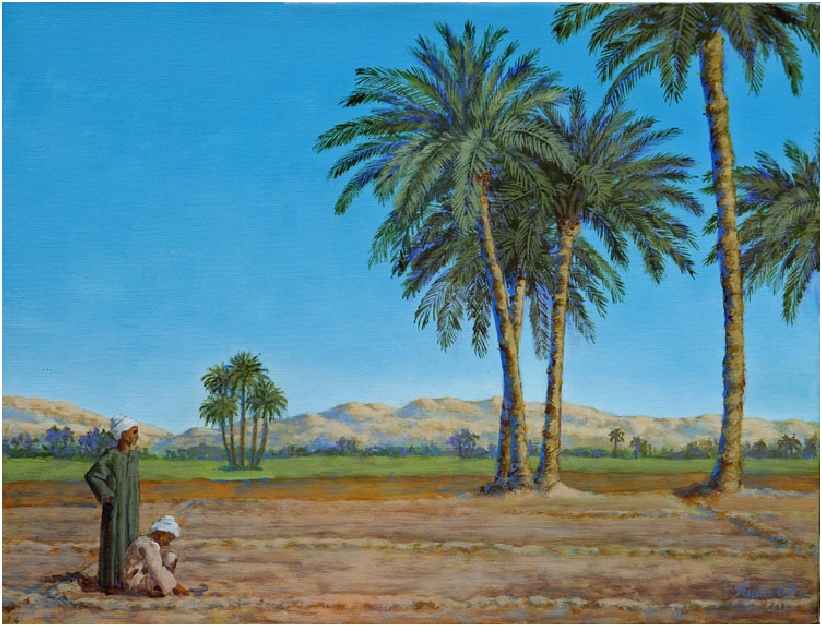
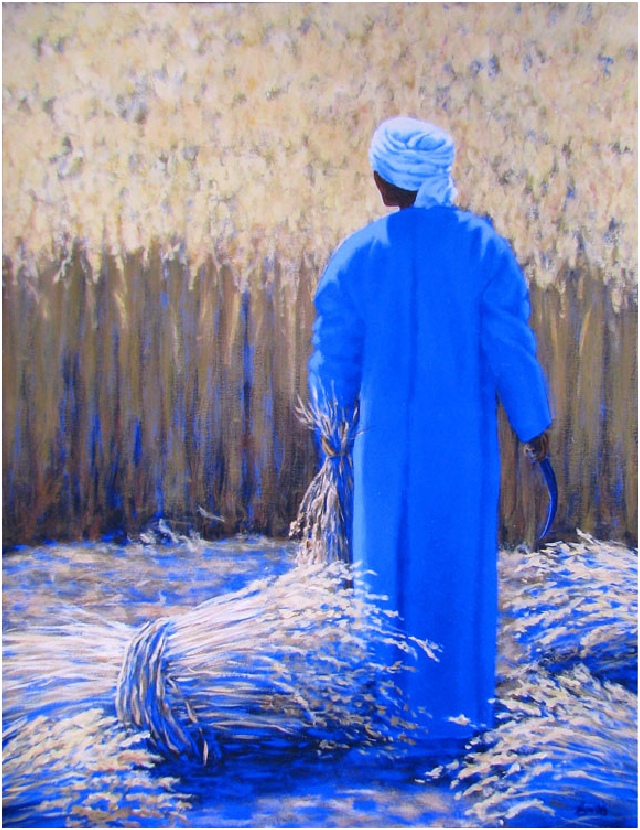
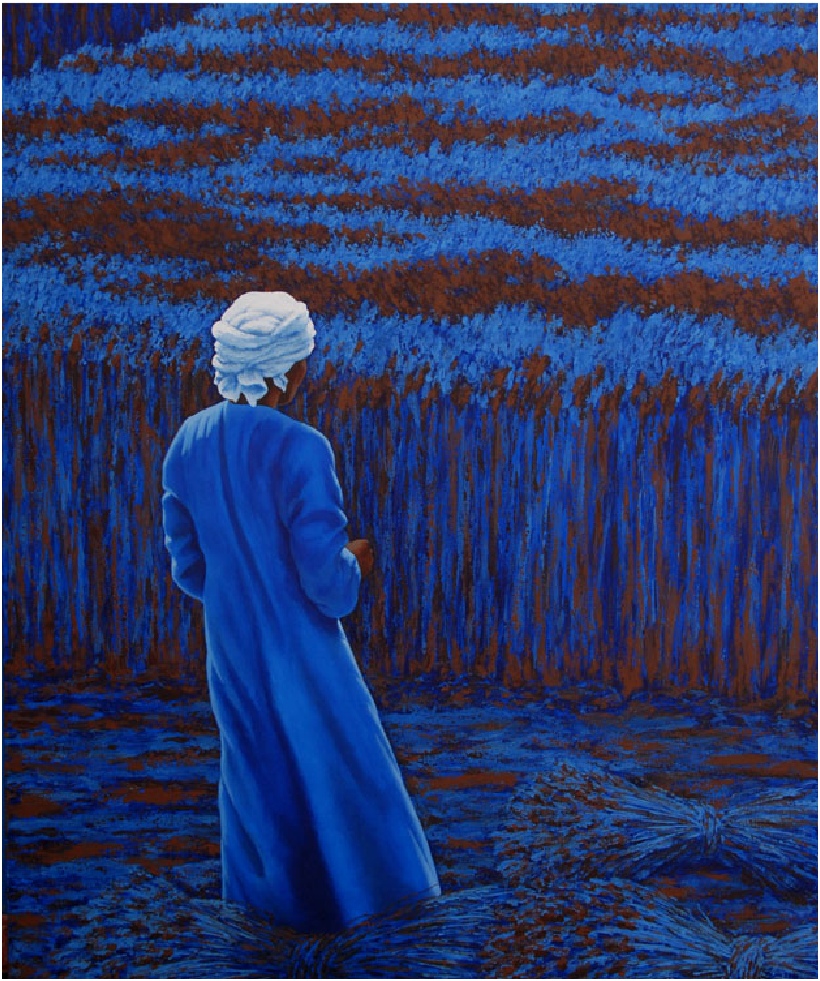

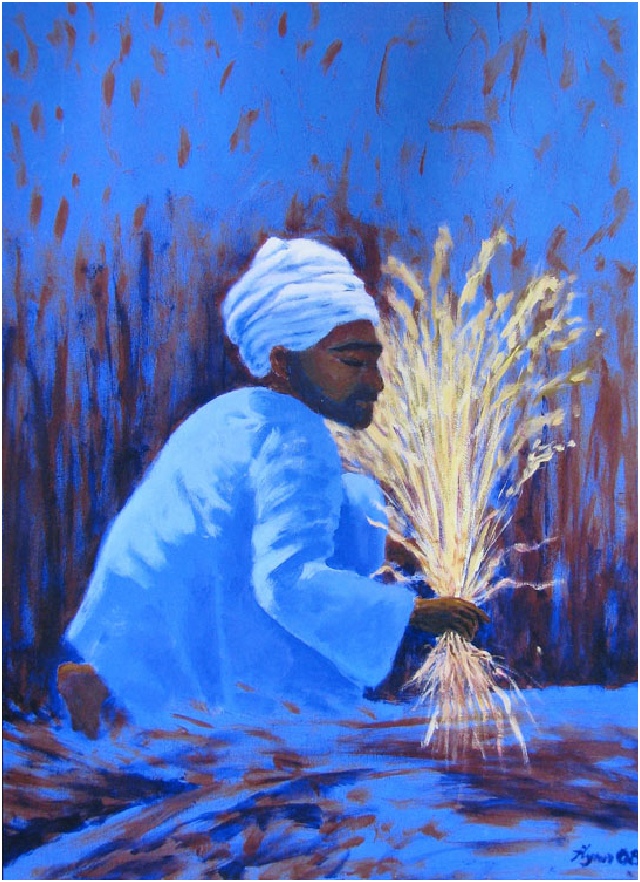


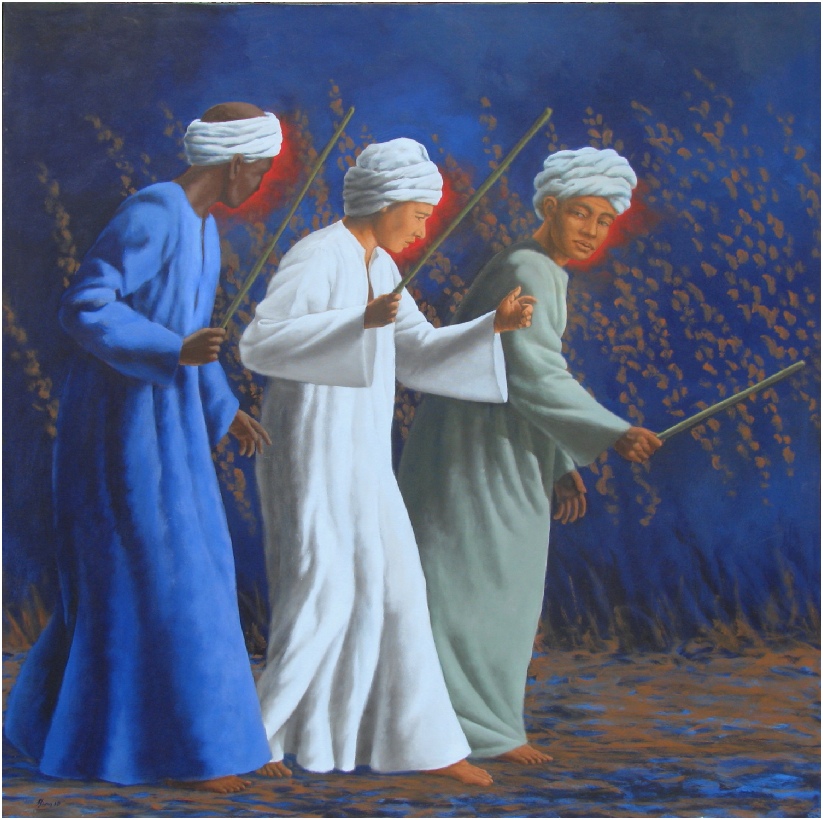

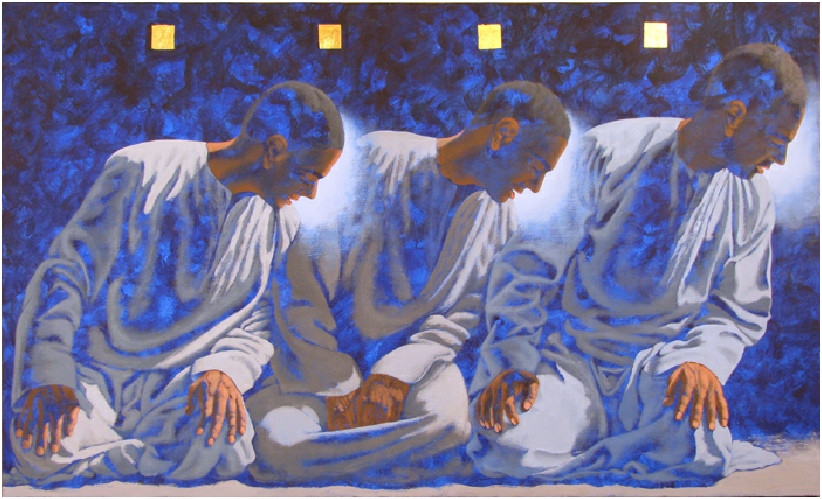
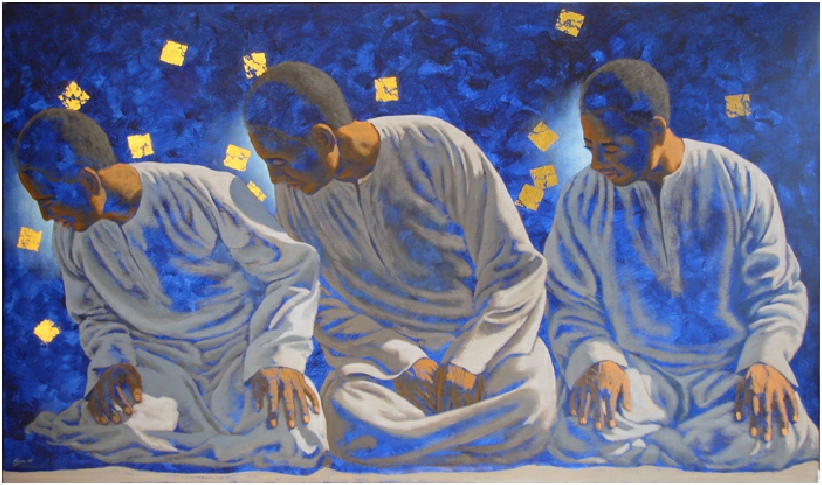


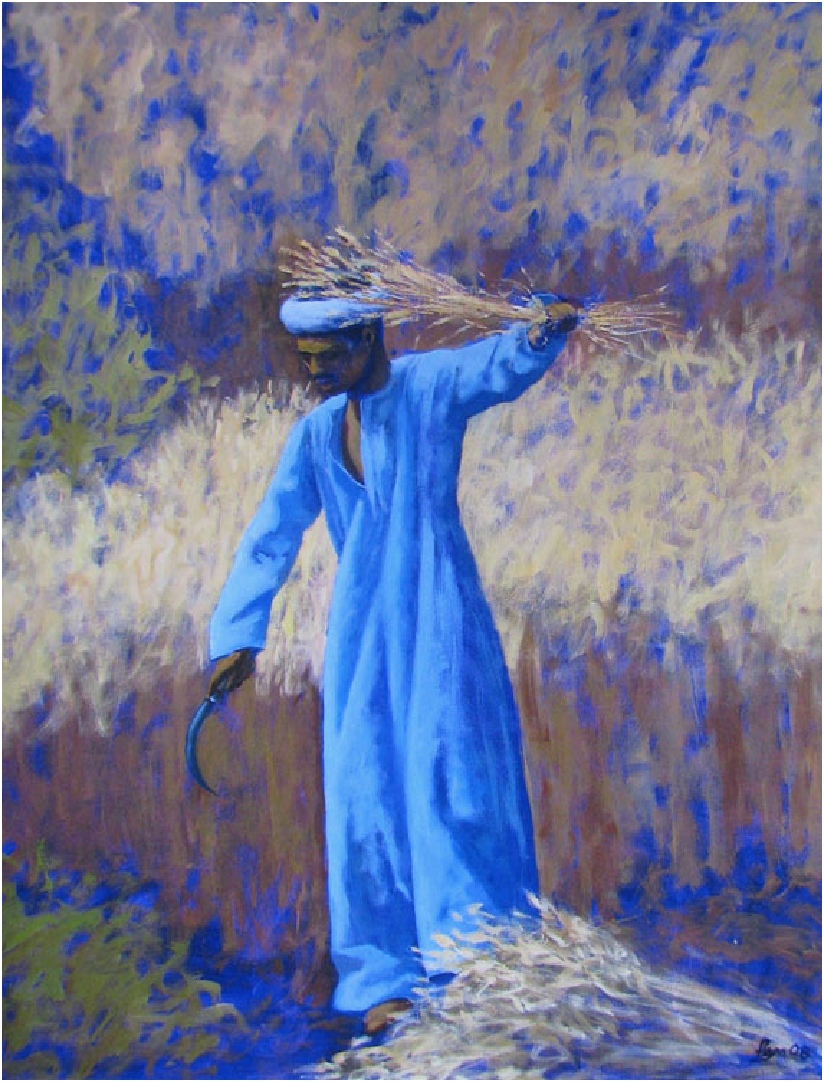

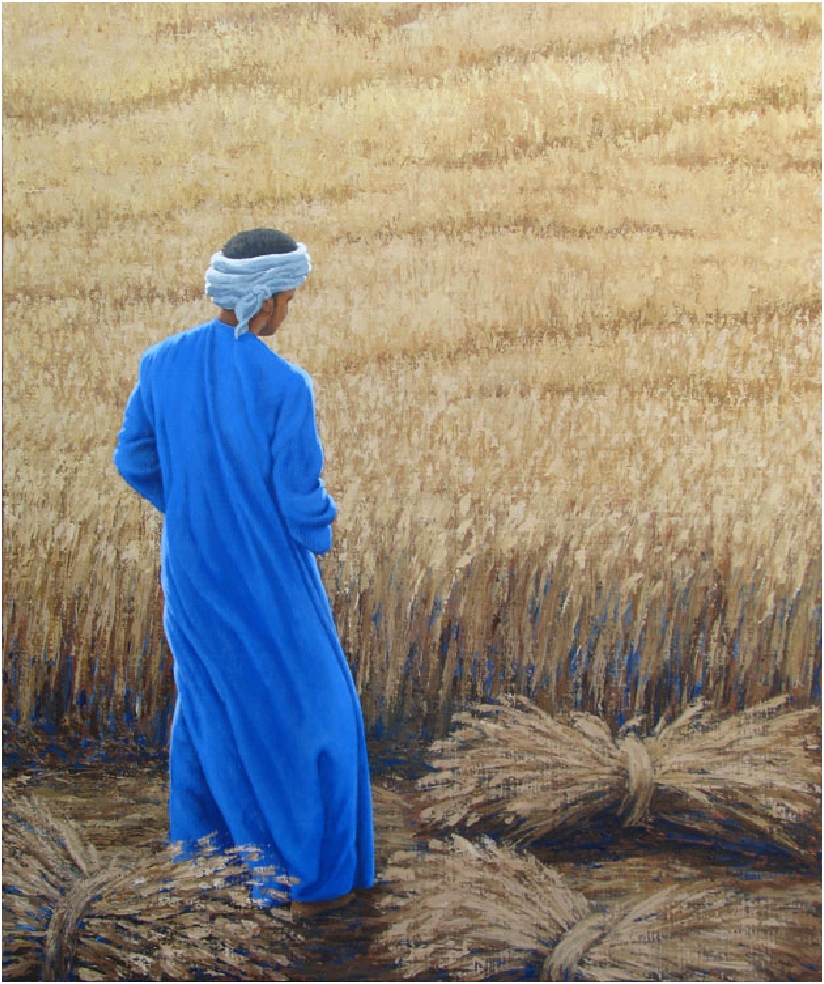

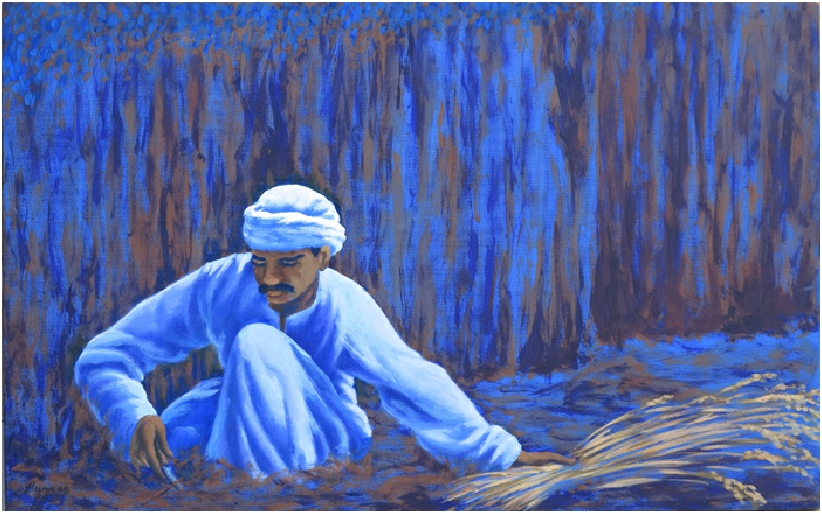

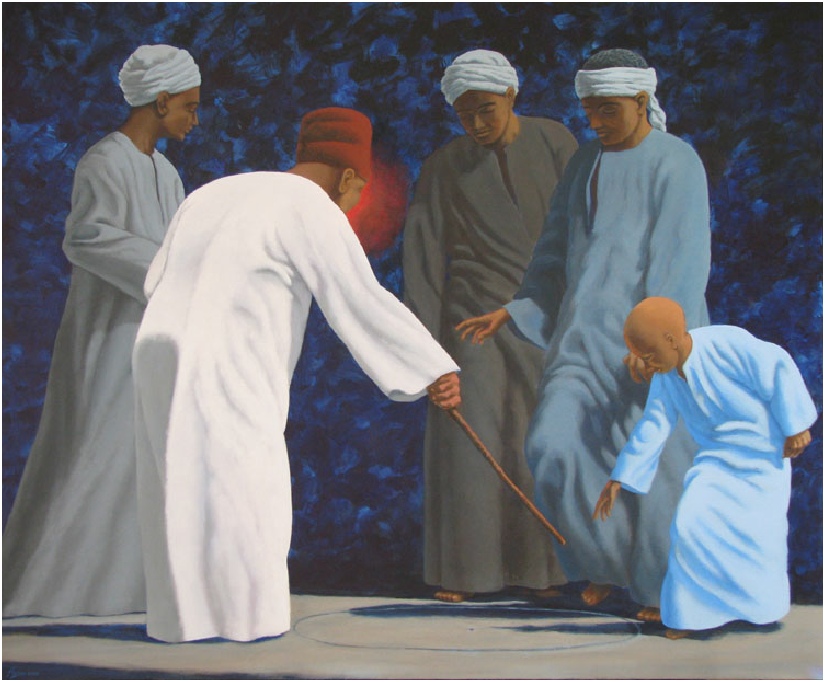

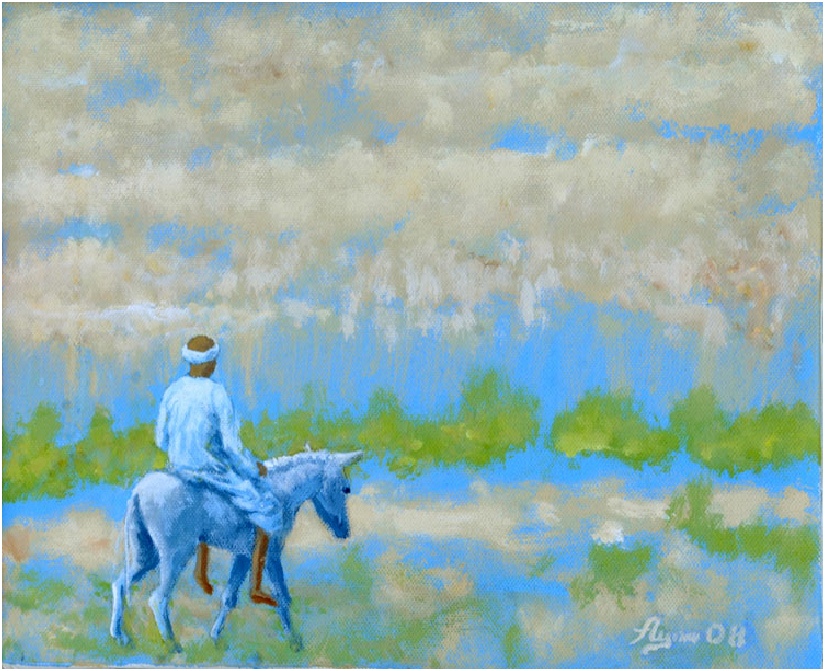


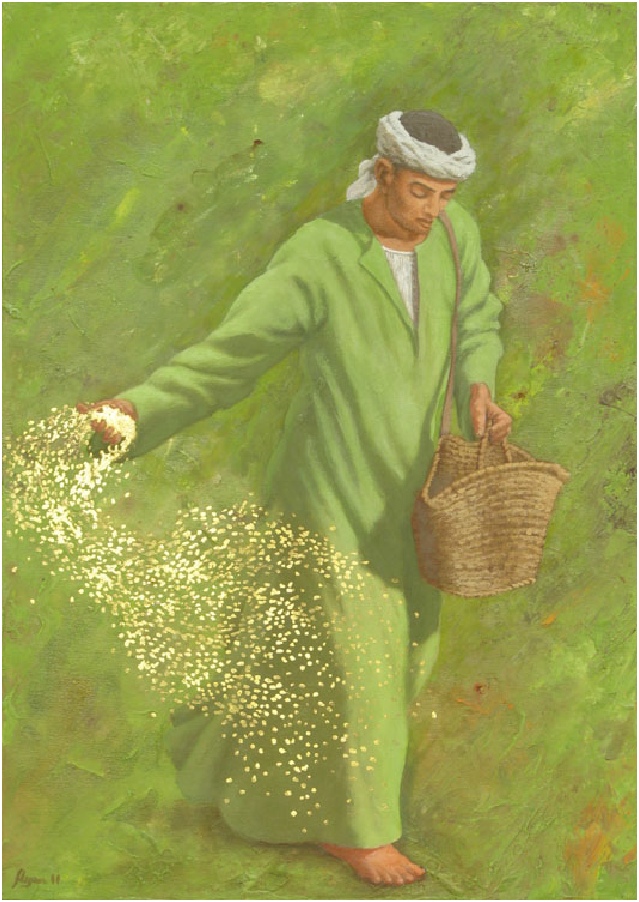
seeds of gold
50x70 cm SOLD
The human figure still remains the single most incredible, fascinating and inexhaustible subject for artists. The book of Genesis tells us: “God created man in His own image. In His own image created He him. Men and women created He them.” And because something of his divine origins, some distant - or not-so-distant trace still remains, this irresistible attraction persists. According to the hermetic maxim “as above, so below”, the outer is also a reflection of the inner, and vice versa. Indeed in all religious art, angels or divine beings generally take on a human form.
The very land of Egypt is sacred, and has a definite effect on those who dwell in it. Since the prehistoric period the Egyptians have painted the human form on pottery and walls, or sculpted it in clay and stone. By the beginning of the Dynastic period they introduced a canon of proportions for the human figure, and the same was used for divine principles (the neteru), whereby they depicted man in the image of God and God in the image of man.
To capture traces of the divine in the human figure is a vital feature of Brian’s work, and the Egyptian people are a perfect vehicle for this. From farmers in the fields to men at prayer; in portraits or Sufi rituals, fragments of the divine light shine through, revealing the hidden behind the visible surface.
